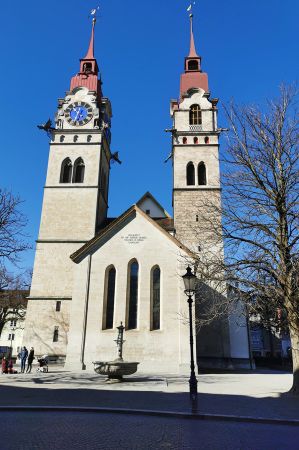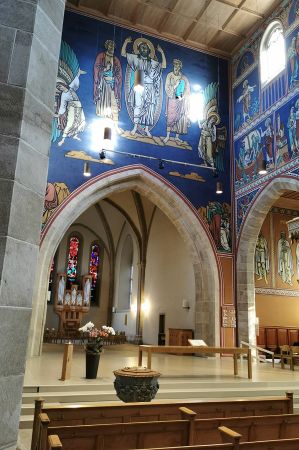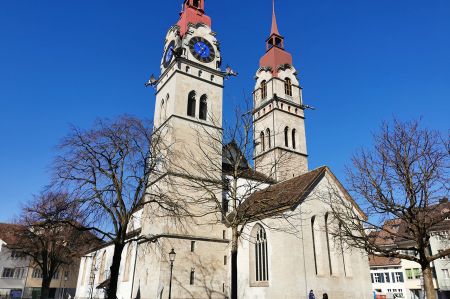The City Church of Winterthur - seven main phases
- Written by Portal Editor
Almost in the center of Winterthur is one of the oldest surviving buildings in the city, the city church, whose building history can be divided into seven main phases between the early Middle Ages and the Reformation.
We had already passed the sacred building, simply called "Stadtkirche", a few times, and now we should also visit the interior extensively.
First foundations of the town church from the 7th/8th century

In the late 11th or 12th century the church was completely demolished in order to build a Romanesque hall church with an aisle-like extension to the south. In 1146 Bernhard von Clairvaux visited the church in Winterthur and preached to the people there, as can be seen from the travelogue of his companions. The first documented mention can be found in 1180, when the Bishop of Constance, Berthold, settled a dispute between the priests of Oberwinterthur and Count Hartmann III. von Kyburg settled. North of the chancel, the church was later given a tower and next to it an ossuary, also in the style of a side aisle. From the 13th century there were three naves.
City Church – enlargement of the side aisles

The seventh and most recent construction phase is then documented by sources. The number of parishioners increased, but on the other hand representation was an important concern for the council. A second tower was built between 1486 and 1490 on the south side of the chancel. The nave was built between 1501 and 1518. It reached ten meters further to the west, but was somewhat narrower than before. After the Reformation, the interior was redesigned in several stages. The ossuary disappeared in 1792, the former sacristy north of the choir was cleared in 1852. The windows of the nave were replaced by neo-Gothic windows by Max Ainmiller in 1853-1856. A cemetery belonging to the church was closed in 1826.
Towers, clocks and bells of the town church
In 1869, the church was given a five-part bell by Johann Jakob Keller, which is distributed over both towers. The two large bells hang in the south tower, the others in the north tower.
Bell 1 weighs 3999 kg and strikes a°
Bell 2 weighs 2005 kg and strikes cis'
Bell 3 weighs 1170 kg and strikes e'
Bell 4 weighs 496 kg and strikes a'
Bell 5 weighs 255 kg and has the striking note "cis"
The murals by Paul Zehnder
The Romanesque interior painting of the church by Paul Zehnder was created between 1923 and 1930. Both prophets of the Old Testament are depicted on the walls of the aisles and scenes from the New Testament in the central nave. In the Transfiguration scene above the chancel arch, Christ is standing on Mount Tabor between Elijah (with the book) and Moses (with the Tablet of the Law).
A tombstone from the pre-Reformation period is that of Elisabeth von Bach († 1519), a southern German noblewoman and patron of the city. Another grave slab of Magdalena von Fulach (1587-1650), which was discovered during the renovation in 1923, is considered lost. During tours, you can still see the preserved remains of the superstructures dating back to the 9th century, as well as Hans Haggenberg's coat of arms painting from 1493.
Organ of the town church by Karl Joseph Riepp
Please read as well:
Winterthur – a Swiss city through the ages
Archaeological Excavations of the settlement of Siculi in 2015
-
-
-
-
-
-
https://www.alaturka.info/en/switzerland/zurich/5580-the-city-church-of-winterthur-seven-main-phases/amp#sigProIda482142137
